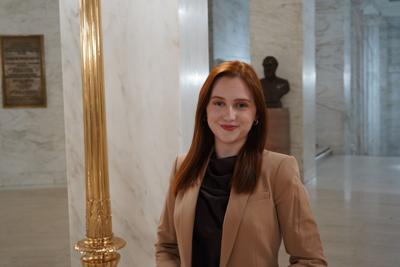
Jessica Dobrinsky
CHARLESTON — Last week’s announcement of a Pfizer–Trump agreement to lower drug prices quickly conquered the news cycle. These negotiated discounts grab attention, promising something concrete in the form of savings for patients.
But one-off agreements such as these shouldn’t distract from a much bigger drug discount program Washington already has on the books: the federal 340B Drug Pricing Program. It warrants far more scrutiny than it currently receives.
Established by Congress in 1992, 340B requires pharmaceutical manufacturers that participate in federal health programs to “offer” certain outpatient drugs to eligible “covered entities” (safety-net hospitals and clinics) at or below a statutory ceiling price.
In theory, these discounts should stretch scarce resources and benefit vulnerable patient populations. However, in practice, 340B has grown into a multi-billion-dollar subsidy for covered entities without any statutory requirement that savings be passed through to patients at the counter.
Indeed, the Health Resources and Services Administration itself has noted the statute does not require covered entities to use their 340B savings in any particular manner.
The numbers are striking. In 2010, 340B purchases totaled $6.6 billion. But by 2021, that figure exploded to $43.9 billion, a growth rate of nearly 19% annually. This rate far outpaces overall drug spending, which grew only 4% per year. Those “purchases” reflect what covered entities paid at discounted prices, not what insurers reimbursed. As such, covered entities acquire drugs at discounted 340B rates yet bill payers as if no discount was realized.
Much of this purchase growth stems from hospital acquisition of off-site clinics and pharmacies that funnel more prescriptions through the program, as well as some statutory expansions under the Affordable Care Act. We may want to assume that revenue can fund services, but it can also pad a balance sheet or finance expensive acquisitions. The Congressional Budget Office reports contract pharmacy arrangements grew from about 2,000 in 2010 to nearly 130,000 in 2021.
At its core, this design violates free-market principles. Patients are unable to shop to capture these discounts; they’re invisible to the consumer. Insurers and taxpayers, therefore, end up footing a higher bill while hospitals benefit from higher profit. Worse, the incentive structure encourages the prescribing of expensive drugs.
Courts are now clogged with litigation over contract pharmacies, rebates, and the definition of a “patient” as manufacturers have pushed back against how hospitals are using contract pharmacies and states attempt to further regulate 340B distribution. This fight is representative of the core problem: 340B is not a market but rather relies on the political allocation of select discounts that breed gamesmanship and on who benefits from them.
Announcements like the Trump-Pfizer agreement make headlines. But the simple truth is that price negotiation only matters if patients see the savings. The 340B program, in its current form, prevents this. Instead, the program has become a $40 billion side business for hospitals that has grown unchecked, distorted incentives, and drained resources.
If the goal is lower drug costs and a patient-centered market, policymakers should narrow eligibility to true safety-net providers and ensure transparency so that patients, instead of systems, capture discounts at the point of sale, and allow competition to do the heavy lifting on price.
Dobrinsky is Chief of Staff of the Cardinal Institute for West Virginia Policy.






